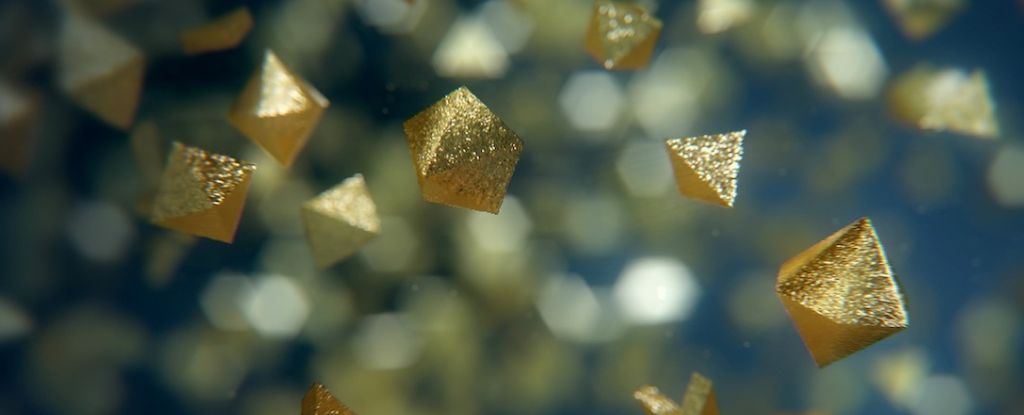Scientists are investigating whether an oral drug sprinkled with gold nanoparticles could one day treat neurodegenerative diseases like Parkinson’s and multiple sclerosis.
The experimental medicine, called CNM-Au8, has now shown success in boosting the brain’s metabolism in phase II clinical trials.
Research on the safety and efficacy of the daily drug is still ongoing, but the initial results have researchers hopeful. The medicine contains suspended nanoparticles of gold that can apparently pass the blood-brain barrier and improve energy supply to neurons, preventing their decline.
“We are cautiously optimistic that we will be able to prevent or even reverse some neurological disabilities with this strategy,” says neurologist Peter Sguigna from the University of Texas Southwestern.
Parkinson’s and multiple sclerosis (MS) are neurological diseases that feature signs of slow brain metabolism. This is thought to starve neurons of necessary energy and result in a build-up of harmful toxins and unstable molecules called free radicals that can damage cells.
The experimental drug, CNM-Au8, is designed to work like an energy stabilizer for the brain.
The choice of material might sound unnecessarily flashy, but crystals of gold nanoparticles are very different to the yellowish metal we’d turn into rings and necklaces. The tiny wine-red flecks can be cheaply synthesized and tweaked to rapidly enter cells or cross the blood-brain barrier to deliver medicine, making them ideal for use as pharmaceuticals.
The modifications that could be made to such drugs are seemingly limitless, and their potential to treat neurodegenerative disease is exciting, although current studies are still mostly confined to animals.
CNM-Au8 is among the first to make it to human clinical trials. The medicine is specifically engineered to provide the brain with a coenzyme critical to energy metabolism and the production of cellular fuel called adenosine triphosphate (ATP).
The coenzyme is one that can exist in two forms: oxidized (NAD+) and reduced (NADH). The ratio of these forms in the brain is essential to maintaining metabolic balance.
In patients with Parkinson’s and MS, NAD+/NADH ratios are unusually low and are indicative of the state of disease.
In recent clinical trials, however, when 13 patients with Parkinson’s and 11 patients with MS took CNM-Au8 every day for 12 or more weeks, their baseline NAD+/NADH ratio increased by an average of 10.4 percent.
That’s a relatively large treatment effect, given that some studies estimate the average person loses about 0.5 percent to their NAD+/NADH ratio per decade.
The improvement is hypothetically sufficient enough to reverse declines in neurodegenerative disease, not just stall them, the researchers say.
In a survey of symptoms, participants in the trial reported a degree of “improved motor experiences of daily living” whilst on the drug.
How the drug achieves this remains unknown, but preclinical studies on CNM-Au8 suggest that CNM-Au8 penetrates the blood-brain barrier and “triggers an increase in energy production in the form of ATP.”
In animal studies, CNM-Au8 also seems to counter some of the signs of MS, such as undoing damage to the sheaths that surround neurons and allow them to send messages more efficiently.
“To our knowledge,” the researchers at UT Southwestern write, “CNM-Au8 is the only suspension of gold nanocrystals with both exceptionally high catalytic activity and very low toxicity that is being developed as a disease-modifying agent for neurodegenerative disease.”
The potential benefits shown in phase II clinical trials have the team preparing for phase III.
The study was published in the Journal of Nanobiotechnology.





